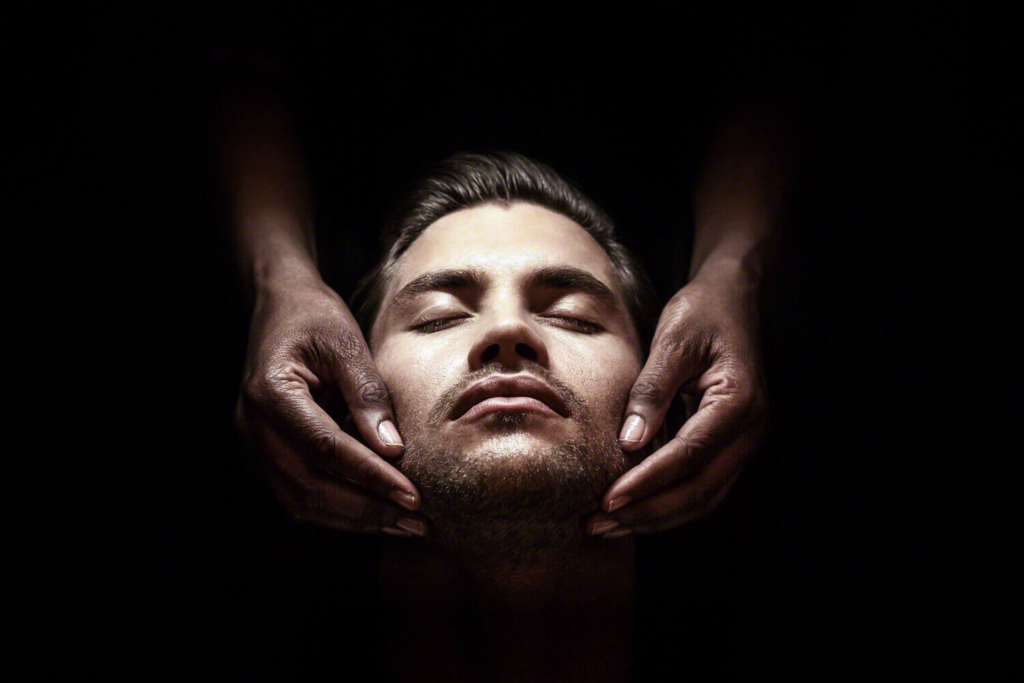Facial masculinity, a complex interplay of genetic, hormonal, and developmental factors, significantly impacts social perception and individual identity. This article provides a comprehensive overview of the current understanding of facial masculinity, encompassing its definition, morphological indicators, underlying biological mechanisms, assessment techniques, and future research directions. While the concept is often simplified, a nuanced approach reveals a multifaceted phenomenon with implications across various fields, including anthropology, psychology, and even forensic science.
Table of Contents
Defining Facial Masculinity: A Review
Facial masculinity refers to the perceived degree to which a face exhibits characteristics typically associated with males. This is not a binary classification but rather a spectrum, with individuals exhibiting varying degrees of masculine or feminine facial features. The perception of facial masculinity is influenced by a complex interplay of individual features rather than a single defining characteristic. Subjectivity plays a role, as cultural norms and individual biases can influence the interpretation of facial features.
Defining facial masculinity objectively remains a challenge. Attempts to operationalize the concept often rely on composite images or standardized measurements of specific facial features. However, the relative contribution of each feature to the overall perception of masculinity is still debated. Furthermore, the interaction between different features needs further investigation to create a truly comprehensive definition. The lack of a universally accepted definition hinders comparative studies and necessitates a cautious approach to interpretation of findings.
The concept of facial masculinity is inherently linked to societal constructs of gender. What constitutes “masculine” varies across cultures and throughout history, highlighting the social and cultural influences on its perception. Therefore, any attempt at a purely objective definition must acknowledge the inherent subjectivity and cultural variability embedded within the concept. Future research should focus on disentangling the biological and sociocultural influences on the perception and expression of facial masculinity.

Morphological Indicators of Masculinity
Prominent morphological indicators of facial masculinity include a larger and more pronounced jawline, a more prominent brow ridge, a wider zygomatic arch (cheekbones), and a longer and more angular face shape. These features are often associated with increased levels of testosterone during puberty and development. The relative prominence of these features, however, varies significantly between individuals and populations.
Other key features contributing to the perception of facial masculinity include a more defined chin, a larger nose, and a greater distance between the eyes. The relative contribution of each feature to the overall perception of masculinity is not fully understood, and the interplay between different features likely contributes to a holistic impression. Furthermore, the impact of soft tissue distribution, such as the amount of subcutaneous fat, should not be overlooked.
It’s crucial to note that the absence of these features does not automatically equate to a lack of masculinity. Facial masculinity is a continuous variable, and individuals may exhibit a combination of features that contribute to a perceived level of masculinity along a spectrum. The focus should be on the overall configuration of facial features rather than the presence or absence of individual traits.
The Role of Hormonal Influences
Androgens, particularly testosterone, play a crucial role in shaping facial morphology during puberty and beyond. Higher levels of testosterone are associated with the development of more masculine facial features, such as a larger jaw and more prominent brow ridge. This effect is mediated through the influence of androgens on bone growth and development.
The timing and duration of androgen exposure during development significantly impact the final facial phenotype. Variations in androgen levels during critical developmental periods can lead to differences in facial masculinity, even among individuals with similar genetic predispositions. This highlights the importance of considering hormonal influences alongside genetic factors in understanding facial morphology.
Furthermore, other hormonal factors, while less extensively studied, may also contribute to facial development and the perception of masculinity. The interplay between different hormones and their potential interactions remains an area requiring further investigation to fully elucidate the hormonal contribution to facial masculinity.

Genetic Contributions to Facial Shape
Genetic factors significantly influence facial morphology, contributing to individual differences in facial masculinity. Studies using twin and family-based designs have demonstrated a substantial heritability of facial features. Specific genes involved in craniofacial development and bone growth are likely to play a role, although the precise genetic architecture remains largely unknown.
Genome-wide association studies (GWAS) are beginning to identify specific genetic loci associated with variations in facial morphology. These studies hold the promise of identifying specific genes and pathways that contribute to the development of masculine facial features. However, the complexity of facial development means that many genes are likely involved, with potentially complex interactions between them.
The identification of these genes could have significant implications for understanding the genetic basis of craniofacial disorders and for developing personalized treatments. Furthermore, understanding the genetic basis of facial morphology could provide insights into the evolutionary pressures that have shaped human facial diversity.
Assessing Masculinity: Measurement Techniques
Several techniques exist for assessing facial masculinity, ranging from subjective visual ratings to objective morphometric analyses. Subjective ratings, while susceptible to bias, provide a measure of perceived masculinity, reflecting the overall impression a face creates. These ratings often involve trained observers scoring faces on a predefined scale.
Objective measurements involve quantifying specific facial features using techniques like 3D facial scanning and landmark-based geometric morphometrics. These methods allow for precise measurements of distances, angles, and ratios between different facial landmarks, providing a more quantitative assessment of facial masculinity. This approach reduces subjectivity but still requires careful consideration of the chosen landmarks and measurement techniques.
The choice of assessment technique depends on the research question and available resources. A combination of subjective and objective measures may provide a more comprehensive understanding of facial masculinity, integrating perceived and actual morphological characteristics. Standardization of measurement techniques is crucial for ensuring comparability across studies.
Applications and Future Directions
The study of facial masculinity has applications in various fields. In forensic science, facial reconstruction techniques benefit from a deeper understanding of facial morphology and its relationship to gender. In anthropology, studying facial masculinity provides insights into human evolution and population diversity. In psychology, it informs research on social perception and mate selection.
Future research should focus on refining measurement techniques, identifying specific genetic and hormonal influences, and understanding the interaction between genetics, hormones, and environmental factors. Longitudinal studies are needed to track changes in facial morphology over time and to assess the impact of aging on the perception of facial masculinity. Furthermore, exploring cultural variations in the perception and expression of facial masculinity is essential.
The integration of advanced imaging techniques, such as artificial intelligence and machine learning, holds significant promise for automating and improving the assessment of facial masculinity. This could lead to more efficient and accurate methods for identifying and quantifying facial features, paving the way for a more comprehensive understanding of this complex trait.
In conclusion, facial masculinity is a multifaceted trait shaped by a complex interplay of genetic, hormonal, and developmental factors, further influenced by cultural perceptions and individual biases. While challenges remain in defining and measuring this trait objectively, ongoing research employing advanced techniques and interdisciplinary approaches holds the potential to significantly advance our understanding of its biological basis and its impact on various aspects of human life. The integration of genetic, hormonal, and morphometric data will be crucial in achieving a more complete and nuanced understanding of facial masculinity.
Visit Dr.MFO Instagram profile to see real patient transformations! Get a glimpse of the incredible results achieved through facial feminization surgery and other procedures. The profile showcases before-and-after photos that highlight Dr. MFO’s expertise and artistic vision in creating natural-looking, beautiful outcomes.
Ready to take the next step in your journey? Schedule a free consultation with Dr. MFO ( Best Facial Feminization Surgeon for You) today. During the consultation, you can discuss your goals, ask any questions you may have, and learn more about how Dr. MFO can help you achieve your desired look. Don’t hesitate to take advantage of this free opportunity to explore your options and see if Dr. MFO is the right fit for you.









